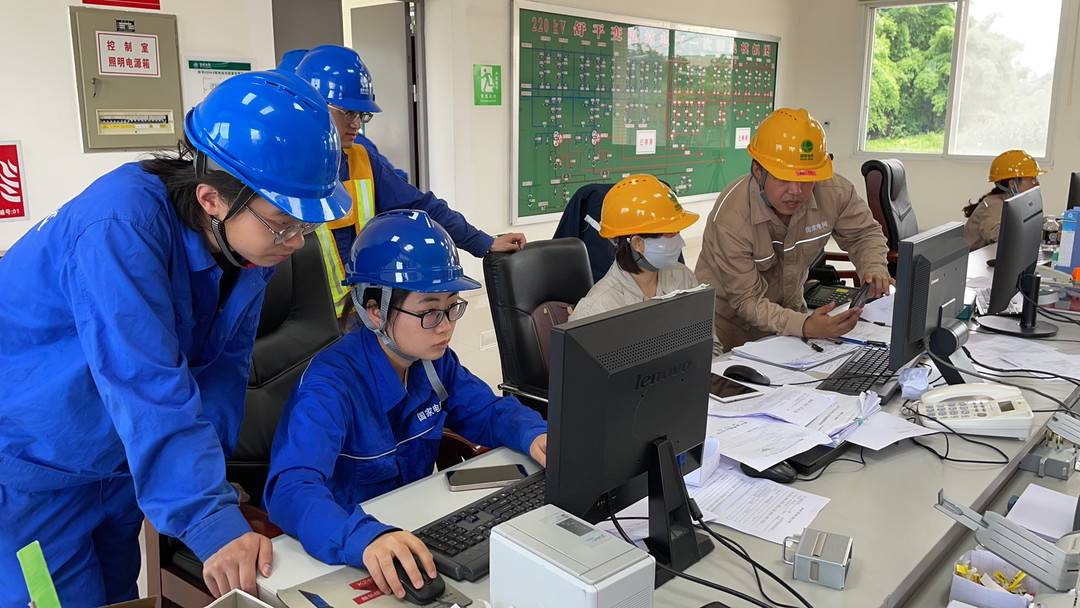Why is the high temperature so fierce?Will this summer become "the hottest in history"?Listen to what the experts say
Author:Yangzi Evening News Time:2022.07.14
On July 13, the Jiangsu Meteorological Observatory issued a high -temperature red warning signal the next day. Yixing has exceeded 40 ° C for two consecutive days. On the night of the 13th to 15th, due to the cold vortex, there was a process of influx precipitation from north to south. Due to the impact of precipitation and flow weather, the range of high temperature intensity will gradually weaken. In the next three days, the "high fever" in the south of the Huaihe River will not retreat, and some areas in northern Jiangsu will gradually take a temporary high temperature. Nowadays, the temperature has not been in the temperature, but there is already a situation of Futian. It is reminded that everyone must pay attention to heatstroke prevention and cooling down, avoid going out during the afternoon as much as possible to avoid heat stroke.
The temperature of the somatoscope rises to 48 ° C and it is very prone to heat stroke
On the morning of the 13th, the Jiangsu Meteorological Observatory continued to issue high -temperature red warnings. It is expected that the highest temperature in Nanjing, Zhenjiang, Changzhou, Wuxi, Suzhou, southern Yangzhou, and southern Taizhou during the day will rise to about 40 ° C. @Jiangsu Meteorology also released a "heat stroke forecast map". Due to factors such as humidity, the actual physical temperature will be higher! Jiangsu Meteorological said, "Take 14:00 as an example, the highest physical temperature is expected to rise to about 48 ° C. The little partners should stay indoors as much as possible, add more water, and beware of high temperature caused by heat stroke and thermal radiation disease."
According to statistics from the Provincial Meteorological Observatory in the afternoon, on the 13th, most parts of Jiangsu still continued to have high temperatures during the day, generally exceeding 35 ° C. As of 16:00, the highest temperature of 1316 townships (streets) in the province reached above 37 ° C (81.3%of the province), of which Changzhou, Yangzhou, Zhenjiang, Nanjing, Suzhou, Wuxi, Yancheng, Taizhou, Nantong, 180 The township (street) exceeds 40 ° C (11.1%of the province), and the highest Suzhou Taihu Manshan Island is 42.4 ° C.
Judging from the statistics of national stations in various places in the afternoon, the highest temperature is Yixing, 40.2 ° C, the second -ranked Suzhou Dongshan 39.7 ° C, and Liyang 39.4 ° C. The reporter learned that Yixing has exceeded 40 ° C for two consecutive days, and has occupied the first place in Jiangsu High temperature list for two consecutive days. On the 13th, the highest temperature in Nanjing Station was 38 ° C, which is the fifth consecutive high temperature day since this month.
The reporter learned from the Jiangsu Provincial Meteorological Bureau that from July 10th to 13th, the meteorological departments at all levels of Jiangsu Province and counties issued a total of 240 high -temperature early warning signals, including 37 high -temperature red warning signals, 141 high -temperature orange early warning signals, and 141, and 141 high -temperature orange early warning signals, and 141 signals of high temperature orange early warning. 62 high -temperature yellow warning signals.
Local rainstorm in northern Jiangsu today, high temperature relief
When did you cool down, this matter is still a subtropical high pressure (hereinafter referred to as the "sub -high"). It is expected that starting on the 16th, the deputy high will gradually withdraw south and eastward, and the high temperature will begin to weaken, but accompanied by strong convective weather such as thunderstorms and wind winds.
According to the forecast of the Jiangsu Meteorological Observatory, due to the cold vortex on the night of the 13th to 15th, there is a process from the north to the south from north to south. Strong convection weather such as precipitation. It is expected to have a cumulative rainfall: 10 ~ 40 mm north of the river, 70 ~ 90 mm, and 0 to 10 mm in other regions. Among them, the rainfall along the Huai and Huaibei region was reached on the 14th, and local rainstorms were located.
According to the latest meteorological data analysis, it is expected that the south of the Huaihe River will continue to continue high temperature on the 14-15, but the intensity and range will gradually weaken. On the 14th, 38 ~ 39 ° C along the river and southern Jiangsu, about 32 ° C in northern Huaibei, 35 ~ 36 ° C in other regions; 15 38 ~ 39 ° C in the southwestern region of Japan, about 33 ° C in the north of the river, 35 ~ 36 in other regions, 35 ~ 36 ° C; 16 37 ~ 38 ° C in the southwest of Japan, 30 ~ 31 ° C between Jianghuai and the northwest of the province, and about 33 ° C in other regions.
In the next three days, Nanjing will continue to be affected by the deputy high control. On the 14th, the city is still mainly based on the high temperature and high temperature weather. It is expected that the maximum temperature will be from 38 ° C to 39 ° C. With the deputy Gao Nanluan from the 15th to 16th, Nanjing will need to pay attention to the afternoon Bureau to prevent the afternoon Bureau. Land mines. It is expected that the highest temperature in the Nanjing Jiangbei area will fall to about 36 ° C from the 15th to 16th, and the highest temperature in other regions will still be 38 ~ 39 ° C.
Two questions
Will it become the "hottest in history" this year?
The monitoring released by the National Climate Center on the 13th shows that since June this year (as of July 12), the average number of high temperature days in my country is 5.3 days, which is 2.4 days over the same period of the year, the same period since 1961. Southern Shaanxi, Henan, southern Hebei, central Shandong and west, Anhui, Jiangsu, Jiangsu, Zhejiang, central and northern and northern, Chongqing, central Xinjiang, southern, western Inner Mongolia and other high temperatures have 10-20 days.
In everyone's impression, it seems that I have not felt such extreme high temperatures for many years. The last time Jiangsu appeared at 40 ° C or in 2017. According to the National Climate Center, since the beginning of the 21st century, the typical years of continuous high temperature events in my country were 2003, 2013, 2017, etc. Generally speaking, this year's high temperature incident starts earlier than the above three years, and the number of duration and historical extreme stations is not as good as these 3 years. Although the scope and the highest temperature in the single station are not as good as 2017, it has exceeded 2003 in 2003, but it has exceeded 2003 in 2003, but it has exceeded 2003 in 2003, but it has exceeded 2003. And 2013.

Why is this year's high temperature so strong?
The southern my country, especially Jiangsu, Zhejiang and Shanghai, "Free Shipping District", and continues to maintain high temperature and hot weather at 40 ° C and above this year. So why is this year's high temperature weather this year? Still so strong?
Experts from Jiangsu Meteorological Observatory said that the direct reason is that the subtropical high pressure is too strong. After the plums from the south of the Huaihe River in Jiangsu on the 11th, the vice -high height gradually entered the west to control the province. Under the control of the vice -high, it was prevailing to sink the air, and it was prone to the high temperature and rainy weather. From 12 to 13, the high temperature in Jiangsu reached the extreme value of the high temperature in this round. Most of the regions along the river and southern Jiangsu reached 39 ° C or above, and some sites exceeded 40 ° C. value. "In addition to the high vice -high and strong, less Meiyu is also one of the important reasons." Professor Luo Jingjia, Professor Luo Jingjia, School of Atmospheric Sciences of Nanjing University of Information Technology, told reporters that in the middle and lower reaches of the Yangtze River in the middle and mid -July of July in the previous year However, during the rain in Jiangsu this year, the amount of rain rain was significantly less than the year, and the temperature was high, which made the soil water content low, and the sunlight was fierce, the temperature increased rapidly, the body was dry and hot, and there would be a "dry sauna". a feeling of.
At present, the La Nina incident is still continuing, so how much does it have a recent "contribution" of extreme high temperature in the middle and lower reaches of the Yangtze River? In this regard, Professor Luo Jingjia said that the La Nina incident was not the most direct cause of this round of high temperature. However, the current La Nina incident, which is continuing, provides a certain climate background condition for the development of high temperature in the south since June of this year, or has played a certain regulatory role.
Yangtze Evening News/Zi Niu Journalist Yu Dandan
Edit: Qin Xiaoyi
- END -
Yichun burst, 1 person died and 2 people lost contact

According to the WeChat public account of Yichun Release, at 3:26 am on July 5, 20...
After the completion of the first major upgrade and transformation of the Sichuan Zigong Shuping substation for more than 30 years, the demand for hundreds of thousands of residents in the self -flow well and the surrounding areas will be fulfilled

Cover news reporter Liu Ke ShengOn June 28, at 220 kV Shuping Power Power Station ...